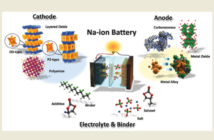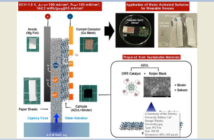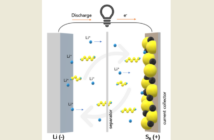Researchers at the Department of Energy’s Oak Ridge National Laboratory claim that recycled tires could see new life in lithium-ion batteries that provide power to plug-in electric vehicles and store energy produced by wind and solar.
By modifying the microstructural characteristics of carbon black, a substance recovered from discarded tires, a team led by Parans Paranthaman and Amit Naskar is developing a better anode for lithium-ion batteries. An anode is a negatively charged electrode used as a host for storing lithium during charging.
Outlined in a paper published in the journal RSC Advances, the method has numerous advantages over conventional approaches to making anodes for lithium-ion batteries.
“Using waste tires for products such as energy storage is very attractive not only from the carbon materials recovery perspective but also for controlling environmental hazards caused by waste tire stockpiles,” Paranthaman said.
The ORNL technique uses a proprietary pretreatment to recover pyrolytic carbon black material, which is similar to graphite but man-made. When the pyrolytic carbon black material was used in anodes of lithium-ion batteries, researchers produced a small, laboratory-scale battery with a reversible capacity that is higher than what is possible with commercial graphite materials.
After 100 cycles, in fact, the capacity measures nearly 390 milliamp hours per gram of carbon anode. This amount exceeds the best properties of commercial graphite. Researchers attribute this to the unique microstructure of the carbon acquired from the tires.
“This kind of performance is highly encouraging, especially in light of the fact that the global battery market for vehicles and military applications is approaching $78 billion and the materials market is expected to hit $11 billion in 2018,” Paranthaman said.
With 11 to 15 percent of the materials market share, anodes are one of the leading battery components, according to Naskar, who noted that the new method could eliminate a number of hurdles.
“This technology addresses the need to develop an inexpensive, environmentally benign carbon composite anode material with high-surface area, higher-rate capability and long-term stability,” Naskar said.
Related Articles:
A Sodium Ion Battery Could Replace a Lithium Ion Battery in the Future
Lithium Ion Batteries in Portable Electronics to Be Charged In 10 Minutes
World’s Biggest Batteries: Sendai Substation Lithium Ion Battery
New Lithium-ion Battery Design: 2,000 times more powerful, recharges 1,000 times faster
Scientists Develop Cross-Linked Electrolytes To Make Lithium-Ion Batteries Safer




